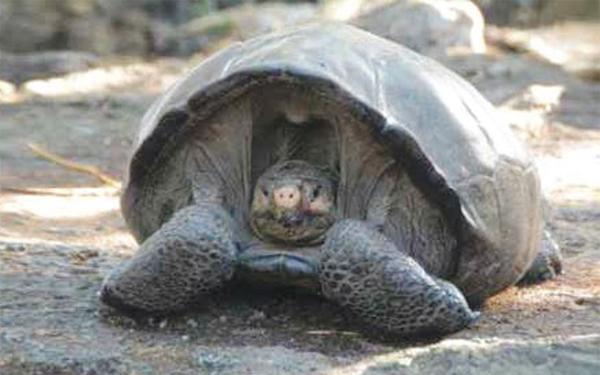
Recently, scientists discovered a living Fernandina Giant Tortoise. This species was last seen in 1906.
The home of this species is the Fernandina Island in the Galapagos Islands The Galapagos Islands are a special group of islands 600 miles (1,000 kilometres) off the coast of Ecuador and because they are so far from land, many plants and animals that can’t be found anywhere else make their home here.
Many species of giant tortoises that can live for over 100 years are among the animal species inhabiting the Galapagos Islands.
These animals have large bodies and long, leathery necks.
Over many, many years tortoises on the different islands have slowly changed their shells and body styles to better suit their environments they live in.
At one point, there were 15 species of Galapagos tortoises, most living on separate islands.
As time went by many of these tortoises became threatened especially due to the fact that in times past the Galapagos was a favourite stopping place for sailors and pirates. They killed and ate giant tortoises. as food. Sadly, some tortoise species have died out.
That’s what scientists thought had happened to the Fernandina Giant Tortoise, from the island Fernandina. But in 2019, they found a female giant tortoise living on Fernandina.
The tortoise was moved to a special centre on Santa Cruz island, where she could be watched and cared for. It seemed likely that she was a Fernandina Giant Tortoise, but it wasn’t certain.
The last time someone saw a giant tortoise from Fernandina island was in 1906. In 2019, a team of scientists Now, DNA samples have proved that she is definitely a member of this Fernandina species which was thought to be extinct.
Scientists have found strong signs – like tortoise tracks and poop – that there may be other tortoises on Fernandina.
Scientists are planning to search for more Fernandina tortoises. They hope to raise more tortoises in captivity to increase their numbers before sending them back to Fernandina.
The tortoises, coming home to Fernandina is good for the island. The way the tortoises eat and spread seeds plays an important part in supporting other important Galapagos species.
Source and pix: News for kids.net
